
Museums all over the world offer a glimpse into the past and showcase a range of military items that once played a role in shaping history. The weapons and equipment displayed in the museum may include guns, swords, armor, and other equipment, which provide valuable insight into the technological advancement, tactics, and strategy employed by various armies and empires throughout history.
In any museum – anywhere in the world, you will come across decorative uniforms, guns, ceremonial swords, helmets, belts and other old-fashioned, antique equipment that once played a key role in shaping the course of history by influencing battles and empires. In fact there can’t be better symbol of bravery, ingenuity, and sacrifices of the men who served. Many of these relics are destined to be preserved in museums purely for the nostalgia, as relics of the bygone era, offering a glimpse into the past.
Here’s a list of military equipment and systems that are likely to become historical relics—preserved in museums for future generations to see and admire:

1. Jonga (an acronym for Jabalpur Ordnance and Gun Carriage Assembly) — was a robust military vehicle that served the Indian Army for over three decades. Manufactured at the Vehicle Factory Jabalpur (VFJ) in the early 1960s, it played a crucial role in various military operations, including the Indo-Pak wars and other peace-time missions. Jonga was eventually phased out in the late 1990s due to induction of more modern, fuel-efficient vehicles. But even today the Jonga holds a special place in Indian military history an icon workhorse used for transporting men and material in border areas, deserts, and mountainous regions.

2. Lee-Enfield .303 Bolt-Action Rifles– served as the primary infantry weapon for over a century known for its fast rate of fire, thanks to its detachable magazine and smooth bolt action. Designed by James Paris Lee and manufactured at the Royal Small Arms Factory in Enfield, the Lee–Enfield rifle was officially adopted by the British Army in 1895. The rifle’s design facilitated a high rate of accurate fire, with trained soldiers capable of delivering 20–30 aimed shots per minute. By the 1990s, the aging bolt-action Lee–Enfield rifles were phased out by the INSAS 5.56×45mm NATO caliber rifle. Today, the Lee–Enfield rifle is a symbol of India’s military heritage just good enough to be preserved in museums.

3. Muzzle-Loading Cannons: Muzzle-loading cannons were a formidable part of Indian military history from the medieval period to the colonial era. These cannons were to be loaded from the front (muzzle), and played significant roles in shaping the subcontinent’s warfare tactics. The Mughals were among the first to effectively use gunpowder for their military campaigns in India. Mughal Emperor Babur used cannons for the first time in the First Battle of Panipat in 1526. This proved to be a turning point in Indian warfare, where massed artillery tactics contributed to the establishment of the Mughal Empire. The Mughal artillery saw significant advancements, including development of multi-barrel cannons and improved gun-carriages under Akbar. The Bahmani Sultanate were also one of the pioneers in use of gunpowder and employed a variety of firearms, including cannons, during their military campaigns. The Bara Gazi Toph, commissioned by Alaudin Bahman Shah in 1347 was one of the longest cannons of its time. Even the Ahoms in Northeast India had a sophisticated artillery system with various types of cannons and guns. Today, many of these historical muzzle-loading cannons are preserved in forts and museums across India. Malik-e-Maidan cannon measuring 4.45 meters in length and weighing approx 55 tons in Bijapur Fort, symbolizes the peak of cannon manufacturing during the medieval period in India.
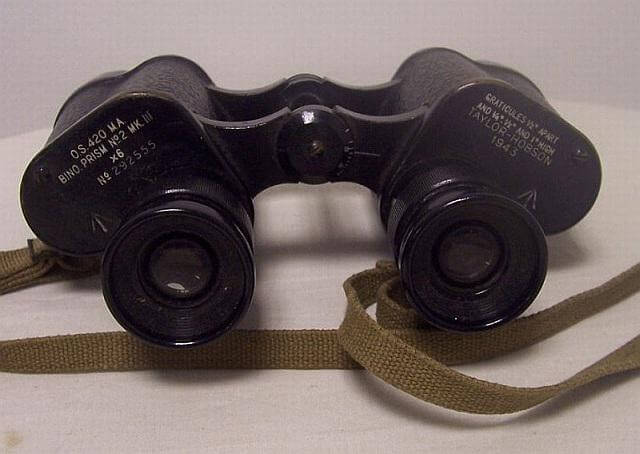
4. No. 2 Mk II 6×30 Binoculars– during World War II, the Indian Armed Forces, then part of the British Indian Army, utilized a variety of optical instruments, including binoculars, for reconnaissance, artillery spotting, and general field observations. These binoculars were primarily of British design and manufacture, with some models produced domestically in India to meet wartime demands. One of the standard field binoculars used by the Indian Army during WWII was the No. 2 Mk II 6×30 model. These binoculars were produced by the Indian Ordnance Factory in Calcutta (now Kolkata) around 1944. They featured a 6x magnification with 30mm objective lenses, offering a balance between portability and optical performance. The design was robust, suitable for the diverse and challenging terrains encountered by Indian troops. In addition to domestically produced models, the Indian Armed Forces were equipped with binoculars supplied by British and Allied manufacturers. Notable examples included Kershaw No. 2 Mk III (British-made 6×30 binocular, widely used across Commonwealth forces) and Ross and Barr & Stroud Model (known for their durability and clarity). These imported binoculars were often marked with the Broad Arrow symbol, indicating government property, and were distributed to various units within the Indian Army. Today, WWII-era binoculars used by the Indian Armed Forces are considered valuable collectibles and are preserved in military museums and private collections.
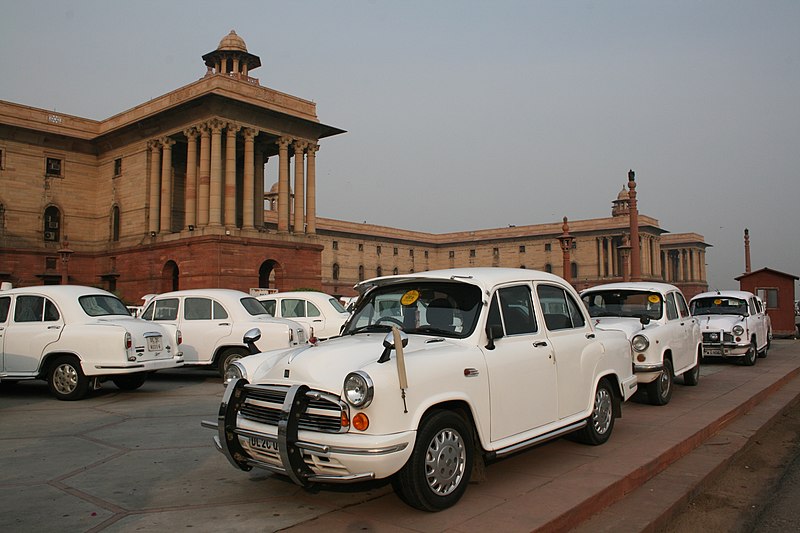
5. Hindustan Ambassador- affectionately called “Amby,” used to be an iconic vehicle in Indian military history. Manufactured by Hindustan Motors from 1957 to 2014, it was based on the British Morris Oxford Series III. While not designed for combat, the Ambassador’s robust build and spacious interior made it ideal for various non-combat roles within the Indian Armed Forces like staff car for transporting officers and for administrative purposes. Its reliability and ease of maintenance contributed to its widespread adoption. Though its production stopped in 2014, the Ambassador remains a symbol of India’s automotive heritage in museums and vintage car exhibitions.

6. Sherman & Panzer tanks – played significant roles in major conflicts but are now retired from active service. Both M4 Sherman and Panzer IV played pivotal roles in numerous battles. The M4 Sherman was the primary medium tank used by the USA and its Allies during World War II. Over 49,000 units were produced between 1942 and 1945. It was designed for a five member crew that included the commander, gunner, loader, driver, co-driver/hull gunner. Initially equipped with a 75 mm gun; its later variants featured a 76 mm gun or a 105 mm howitzer. It could travel at a speed of approx. 30–48 km/h, depending on the model and terrain. The Sherman’s design allowed for numerous variants, including the British Sherman Firefly, which mounted a powerful 17-pounder anti-tank gun.

On the other hand the Panzerkampfwagen IV, commonly known as the Panzer IV, was the most widely produced German tank and the backbone of the Wehrmacht’s armored forces during World War II. It was also designed for a five member crew including the commander, gunner, loader, driver, and radio operator. Initially it had an armor thickness of 30 mm which was increased to 80 mm. It could travel at a maximum road speed of about 40 km/h. The Panzer IV was so versatile that it remained in frontline service throughout the war.
Today, both the M4 Sherman and the Panzer IV are preserved in military museums worldwide, serving as perceptible reminders of the technological advancements and strategic doctrines of World War II. Their presence in the historical exhibits underscores their significance in the history of armored warfare.

7. F-4 Phantom & MiG-21 Fighter Jets – There was a time when both McDonnell Douglas F-4 Phantom II and Mikoyan-Gurevich MiG-21 fighter jets were kings of the sky and left indelible marks on the history of military aviation. Both these aircrafts have since retired from frontline service and are preserved in aviation museums worldwide, for their historic value.
The F-4 Phantom II was a tandem two-seat, twin-engine, all-weather, long-range supersonic jet interceptor and fighter-bomber originally developed for the United States Navy. It first entered service in 1960 and was designed for a crew of two people – the pilot and the radar intercept officer. It had a maximum speed of Mach 2.23 (approximately 2,370 km/h) and range of 2,816 km. It could carry up to 8,400 kg of weapons, including air-to-air missiles, air-to-ground missiles, bombs, and an internal M61 Vulcan cannon. The F-4 Phantom II was renowned for its versatility in roles such as air superiority, ground attack, and reconnaissance. It set 15 world records for in-flight performance, including an absolute speed record and an absolute altitude record.
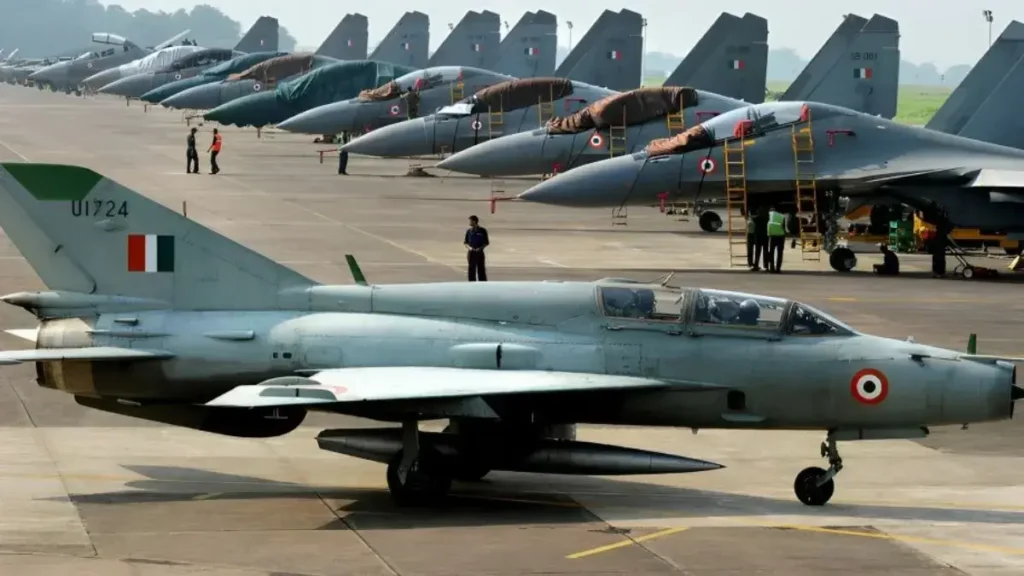
The MiG-21 on the other hand was a supersonic jet fighter and interceptor aircraft designed by the Mikoyan-Gurevich Design Bureau in the Soviet Union. It first flew in 1955 and entered service in 1959. The MiG-21 was the most-produced supersonic jet aircraft in aviation history. It could accommodate just one crew member – the pilot. It had a maximum Speed of Mach 2.05 (approximately 2,175 km/h) and range of 1,950 km. It could carry one 23 mm twin-barrel cannon, and up to 2,000 kg of external stores including air-to-air missiles and bombs. The MiG-21 was known for its simplicity, speed, and agility and had participated in numerous conflicts serving in over 60 countries including the Vietnam War, the Six-Day War, and the Indo-Pakistani wars.
F-4 Phantom II was widely used by the U.S. military and served with the air forces of 11 other nations, including the United Kingdom, Germany, and Japan. It participated in various conflicts such as the Arab-Israeli wars and the Gulf War and retired from U.S. service in 1996.
MiG-21 formed the backbone of the Soviet and allied air forces during the Cold War. It was extensively used in the Middle East, Asia, and Africa. In India, the MiG-21 entered service in 1964 and played significant roles in the 1965, 1971, and 1999 conflicts.
Both the F-4 Phantom II and the MiG-21 have retired from frontline service in most countries but continue to be celebrated for their historical significance and are preserved in aviation museums worldwide.

8. Pattern 1907 Sword Bayonet – was a historic British military bayonet designed for use with the Lee-Enfield rifle. It had a 17-inch blade for close combat, providing soldiers with a versatile tool for both cutting and thrusting. It was so extensively used during World War I and World War II, that it become a symbol of British infantry. The Pattern 1907 bayonet was produced in India at the Rifle Factory Ishapore (RFI). The Pattern 1907 bayonet remained in service with Indian forces well into the mid-20th century. Today, these bayonets are preserved in military museums and private collections, serving as tangible reminders of India’s military heritage and its role within the broader context of the British Empire’s armed forces.
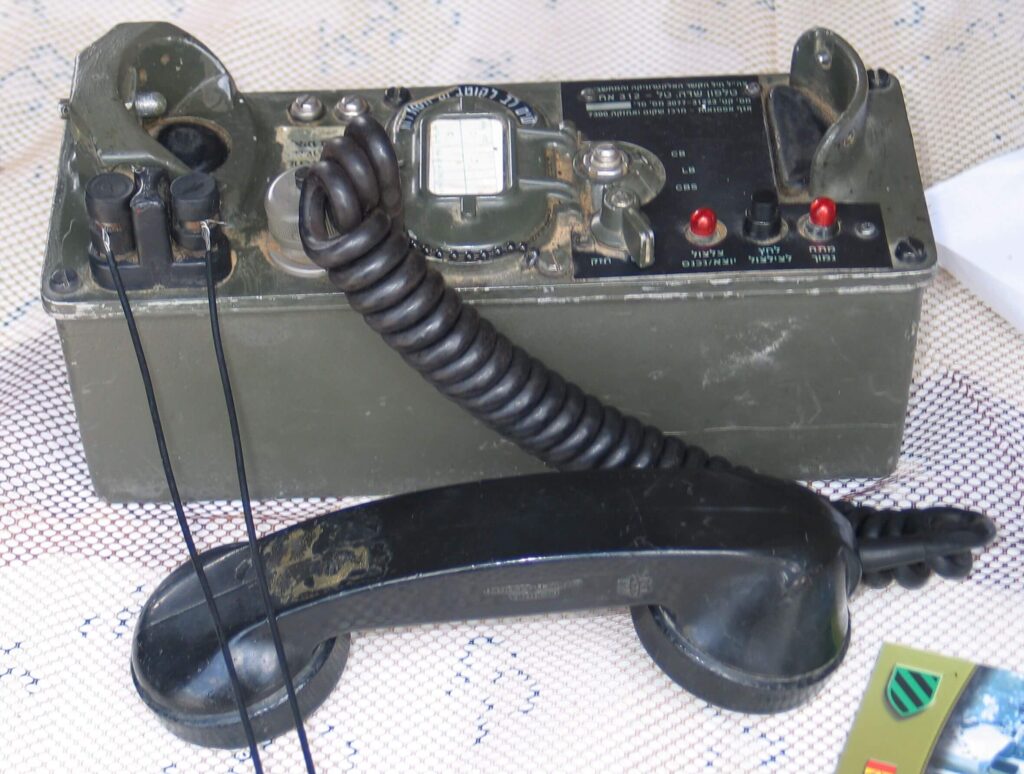
9. Manual Communication Devices – Manual communication devices, particularly field telephones, have played a pivotal role in the Indian Armed Forces to facilitate secure and reliable communication across various terrains and combat scenarios. The Indian Army’s engagement with field telephones dates back to the late 19th century. In December 1877, during operations in Peshawar, the Indian Army utilized field telephones designed and manufactured by Lieutenant G.R.R. Savage of the Royal Engineers. These early devices were produced in regimental workshops, marking one of the first instances of military telephone use in the field. The initial field telephones used by the Indian Armed Forces were operated using local batteries, while others were sound-powered, eliminating the need for external power. Early versions employed hand-cranked generators to send ring signals, whereas later models incorporated push-button or automatic signaling. These devices operated over wire lines, which could be laid in combat conditions or connected to existing civilian circuits when available.

10. Army postal service & Carrier pigeons: Both the Army Postal Service (APS) and carrier pigeons have played pivotal roles in the evolution of military communications in India, each serving as vital conduits for information dissemination during their respective eras.The origins of the APS trace back to 1856, when the first Field Post Office (FPO) accompanied British expeditionary forces to Persia. Throughout World Wars I and II, FPOs were integral in maintaining communication lines between the frontlines and the home front. In 1972, under the leadership of Brigadier D.S. Virk, the APS was established as a separate corps within the Indian Army, formalizing its role in military logistics and communication. The APS today operates numerous FPOs across India, ensuring mail delivery to armed forces personnel, even in remote and conflict-prone areas. By using coded addresses and dedicated postal routes, APS maintains the confidentiality and security of military correspondence.
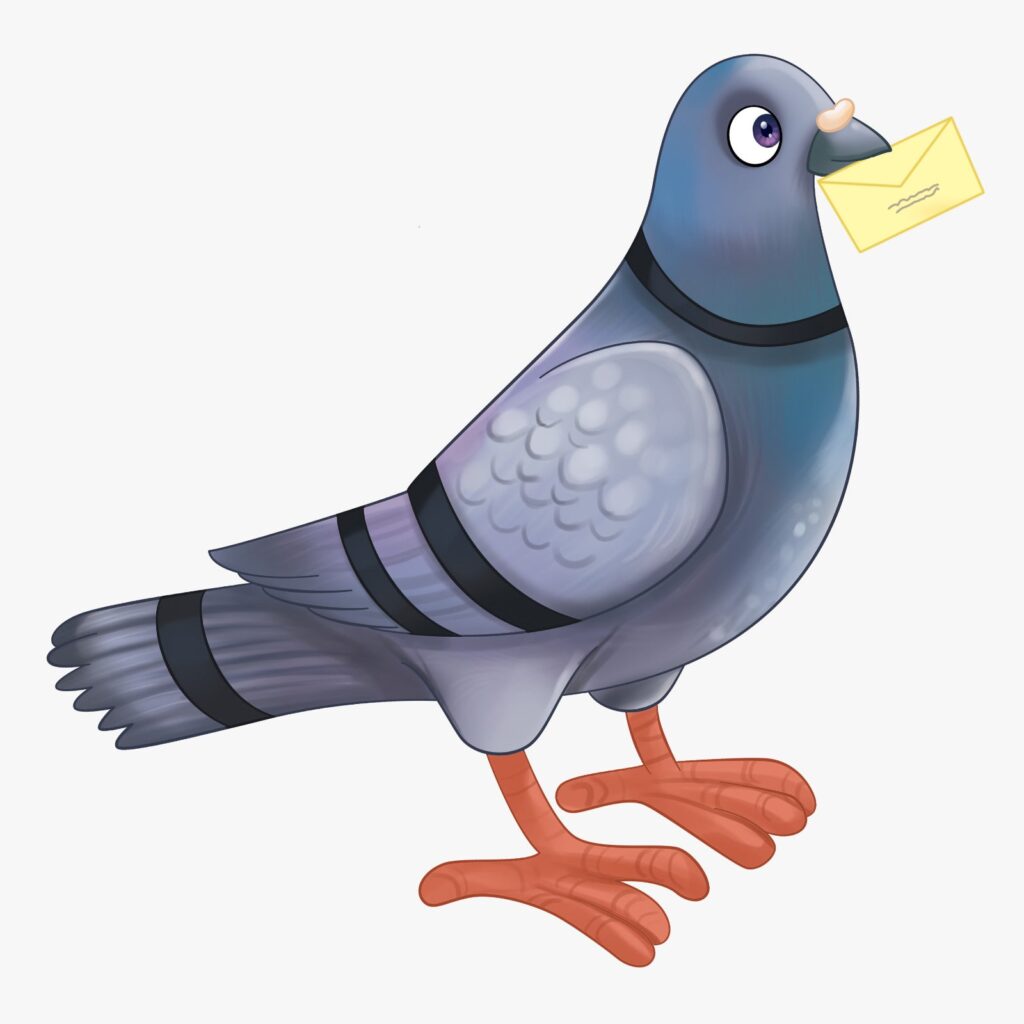
The use of carrier pigeons in India dates back to the 16th-century Mughal era, where they were employed for transmitting messages across vast territories. Their prominence surged during the World Wars, serving as reliable messengers in regions like Europe, India, and Burma. Carrier pigeons were deployed to deliver critical messages, especially when other communication lines were compromised during World War I and II. Pigeons like “Cher Ami” and “G.I. Joe” gained fame for their heroic deliveries, with some being awarded honors for their service. While technological advancements have rendered the use of carrier pigeons obsolete in military operations, their legacy endures. They are remembered for their invaluable contributions to wartime communication and are commemorated in various military histories and museums.
Conclusion
As military technology advances, numerous equipment that once played pivotal roles becomes obsolete and have to be housed in museums across the country, as a reminders of the military heritage and the evolution of warfare. Future generations will have the opportunity to learn from and reflect upon these relics, preserving the legacy of those who served.

